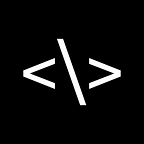Design Your Dream Career: A Guide to UX/Product Design
Creating seamless experiences for users, crafting interfaces that feel intuitive and delightful, and leaving a positive impact on how people interact with the digital world
UX/Product Design & Designer Roles
UX/Product Design: Ensuring products offer positive user experiences and meet business objectives. Involves user research, wireframing, prototyping, and iterative improvements.
Responsibilities: Designers aim to make products intuitive, useful, and engaging, focusing on user experience.
Industry Views
- Google: Prioritizes simplicity and user-friendly designs.
- Apple: Emphasizes collaboration, aesthetic consistency, and user-centered principles.
- Lyft: Involves designers in all stages, focusing on user-centered solutions.
Requirements
- Craft: Mastery in design processes and tools.
- Communication: Strong in collaboration and feedback integration.
- Business Acumen: Understanding user needs and business context is crucial.
Pathways: Traditional degrees or bootcamps; agency or startup experience beneficial.
Product Design Glossary
Planning & Execution
- Agile: Iterative development focusing on customer feedback.
- Scrum: Agile framework using short sprints for development.
- Kanban: Visual project management tool for continuous delivery.
- Gantt Chart: Timeline chart for mapping project stages.
- Sprint: Time-boxed period for completing tasks in Scrum.
- Milestone: Key progress points in project timelines.
- Retro(spective): Reflective meeting post-sprint or project.
- Waterfall: Sequential development process, less used than Agile.
- OKR: Goal-setting framework for objectives and key results.
- KPI: Metrics for measuring project or organizational success.
- Technical Debt: Consequence of expedient but imperfect solutions.
- Feature Creep: Uncontrolled expansion of project scope.
- Scope: Defined project boundaries and deliverables.
- Dependency: Tasks/projects reliant on others’ completion.
Roles
- Product Designer: Focus on product design and user experience.
- UX Researcher: Specializes in user behavior and needs research.
- Technical Lead (TL): Leads technical project delivery.
- Site Reliability Engineer (SRE): Ensures site/service reliability.
- Technical Program Manager (TPM): Manages technical project aspects.
- Product Manager (PM): Defines product strategy and roadmap.
- Product Analyst: Analyzes user data for product decisions.
- QA Engineer: Tests product for quality before release.
Product Terms
- A/B Test: Comparing two product versions to find the better performer.
- Beta Test: Pre-release phase with a select user group.
- CTR: Clickthrough rate metric.
- Early Adopters: First product users providing feedback.
- Low-hanging fruit: Easy improvements with significant impact.
- Pain Point: Problems experienced by potential customers.
- ROI: Measure of investment efficiency or profitability.
- UI: Interface for human-computer interaction.
- Use Case: Scenario describing product interaction.
- UX: Overall user experience with a product.
- Value Proposition: Product’s benefit to users.
Articulating Your Design Process
Design Process Nature: Combines artistic sensibility, product thinking, and user empathy in a methodical way, crucial for tech company interviews.
Expectations: Demonstrate a consistent, adaptable process that reflects problem-solving skills in tech environments.
Key Questions
- Serving User Needs: Validate designs with user feedback.
- Making Trade-offs: Showcase informed decisions based on user needs.
- Collaboration: Share clear narratives of teamwork and project learnings.
- Unique Strengths: Highlight your design preferences and strengths.
- Unique Approach: Reflect on personal experiences shaping design skills.
Design Thinking Framework
Phases: Empathize, Define, Ideate, Prototype, Test, Implement.
Enhancements
Include specific examples, feedback mechanisms, collaboration details, and insights on continuous process improvement for a fuller understanding.
How to Ace Whiteboard Design Challenges
Objective: Assess design skills through live observation of design process, communication, and collaboration.
Format: Use a whiteboard or digital tool like Google Jamboard for a 45-minute design challenge.
Key Focus Areas:
- Problem-Solving: Efficiently scope the problem for logical design decisions.
- Design Process: Prioritize process over perfect solutions.
- Collaboration: Engage with the interviewer for guidance and feedback.
Interviewers Look For:
- A logical design process that addresses user and business needs.
- Ability to be decisive in ambiguity and showcase teamwork skills.
- An approach that simulates real-world problem-solving.
Steps to Success:
- Set Context (7–10 min): Define goals, metrics, platform, scope, and constraints.
- Create a Persona (7–10 min): Identify user demographics and behaviors.
- Design the Experience (20–25 min): Outline a user flow and sketch key screens.
- Summarize (2–6 min): Reflect on the process, mistakes, and potential improvements.
Author: https://www.linkedin.com/in/shivam-ross/ | https://twitter.com/BeastofBayArea | https://www.instagram.com/sup.its.shiv/
